Ustka 2024-08-29
Passenger carriages in the “push-pull” system.
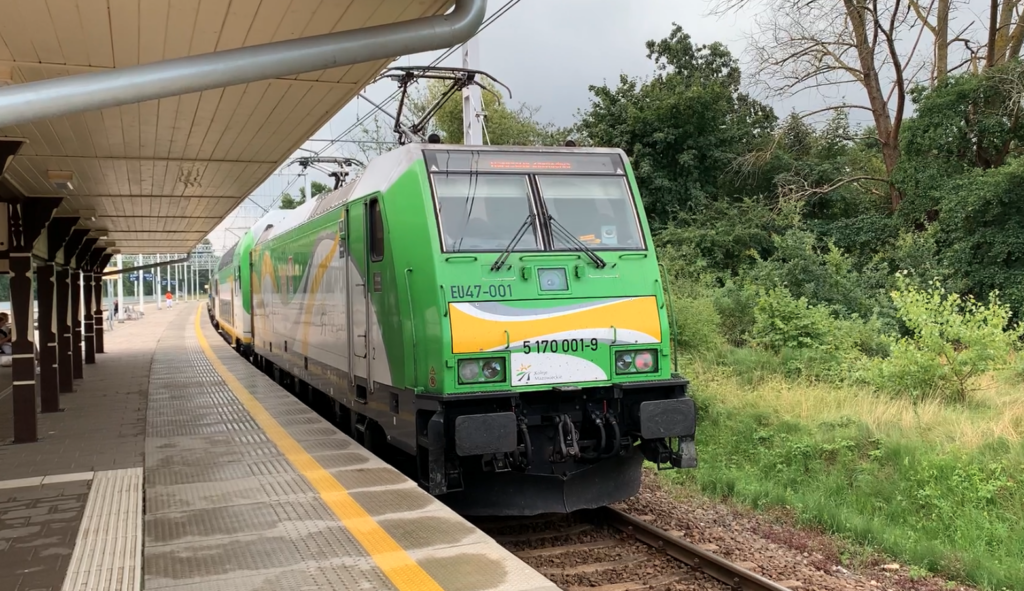
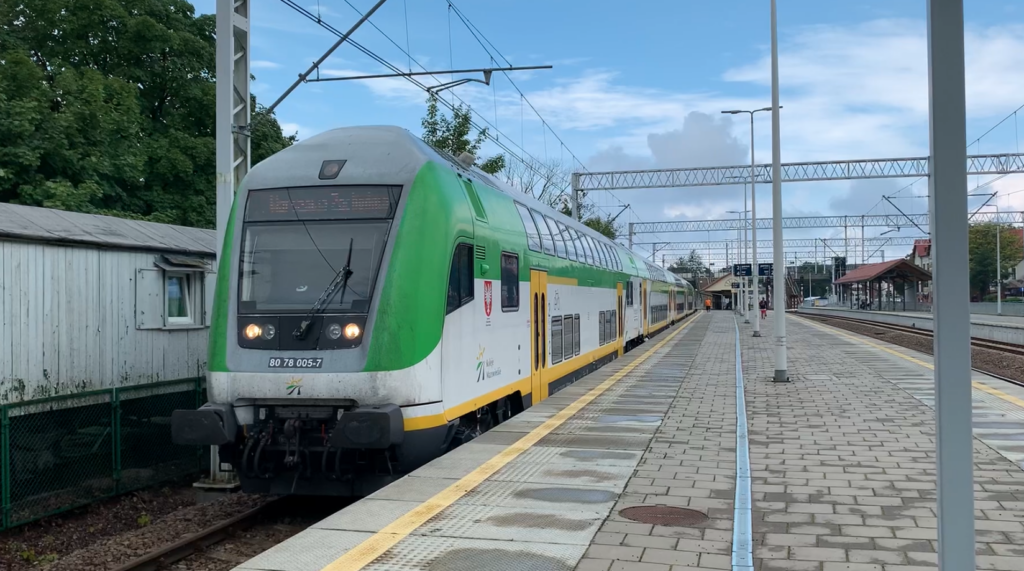
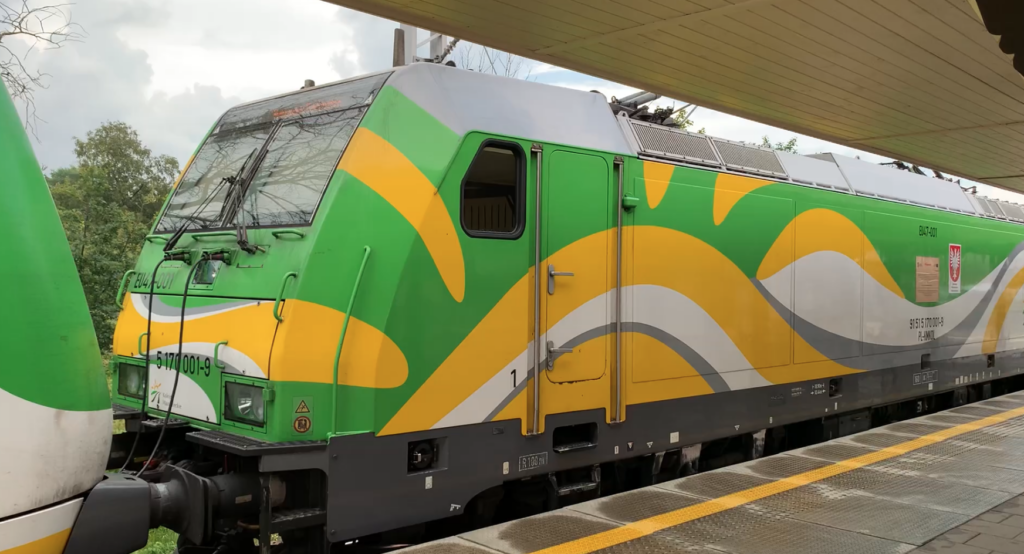
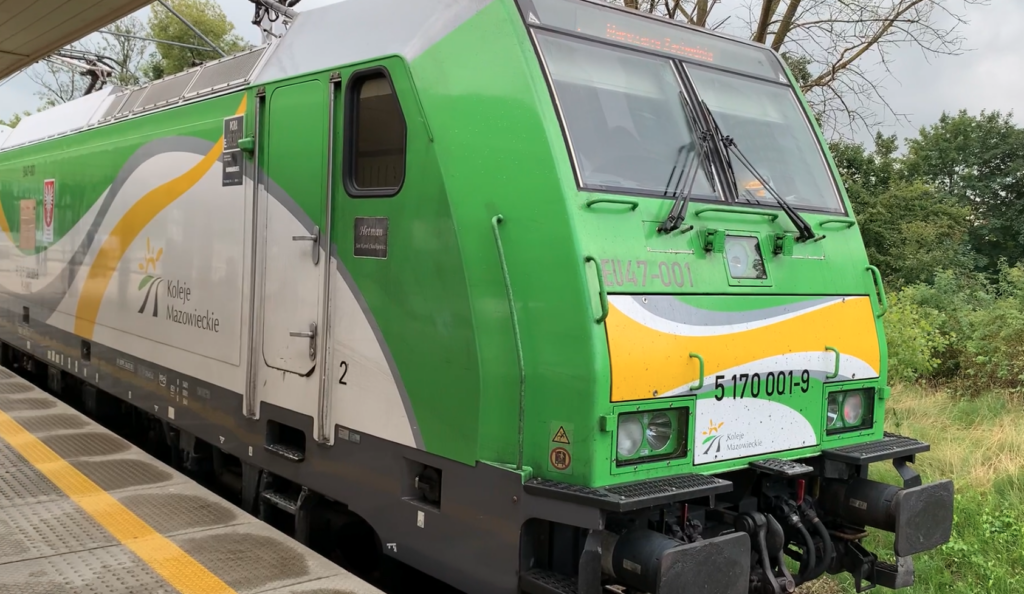
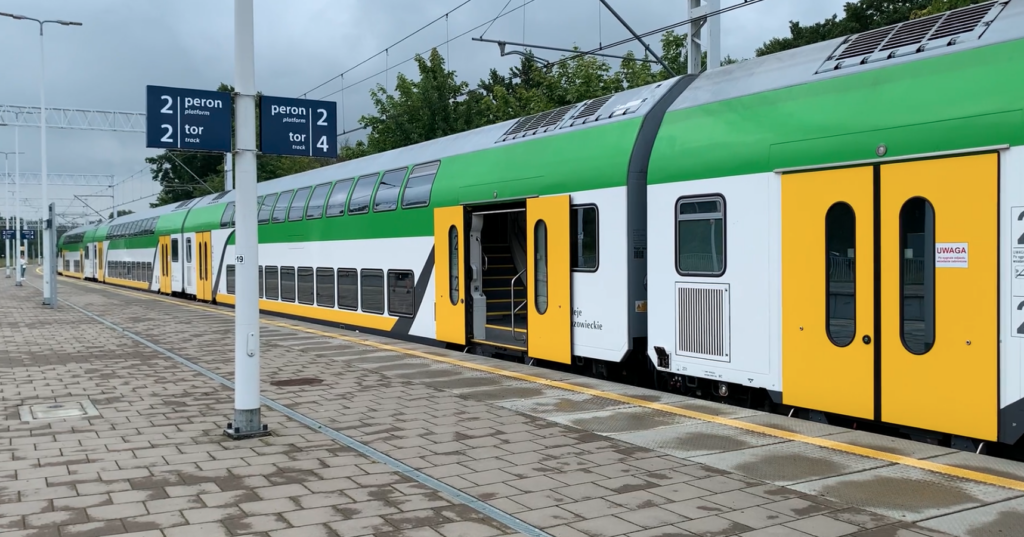
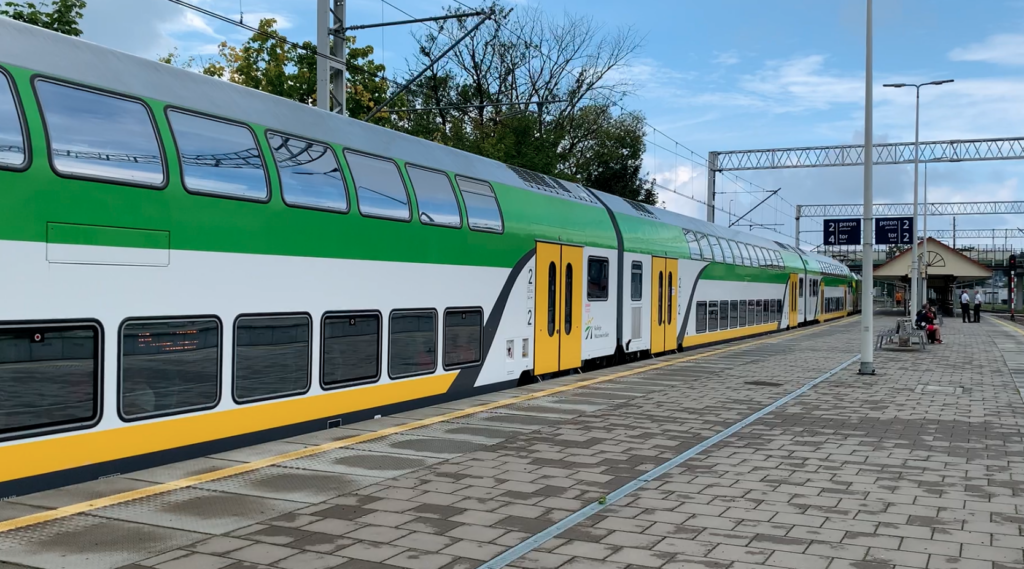
The “push-pull” system in Polish means to push and pull. Translating this into rail transport, it means that the driving car can be either at the beginning of the train or at the end of the train. This system is nothing new in Poland. Before World War II, PKP used the EZT E91 / E51 / EW51, which was produced and operated in the period 1936-1979. In this train, the first car was the driving car, and because the train had control cabins at both ends of the train, it moved equally in both directions. This means that two cars were either pulled or pushed. A similar situation is in the case of the iconic EZT EN51 trains. In these trains, the driving car is the middle car. This means that one end car is always pulled, and the other end car is pushed. In 2008, Koleje Mazowieckie (a regional carrier) purchased Bombardier Twindexx double-decker cars. These cars are adapted to operate in the “push-pull” system. However, the carrier did not purchase dedicated locomotives. Electric locomotives of the EU07 series were rented to operate these cars. These locomotives were not adapted to these cars. Therefore, at each final station, the locomotive had to drive around the set of cars to be at the front.
Only after a few years were dedicated Bombardier TRAXX P160DC electric locomotives purchased to operate Bombardier Twindexx cars. Only then could the cars with a control cabin, which were purchased in 2008, be used. It is worth adding that Koleje Mazowieckie announced a tender for electric locomotives, which was resolved on February 12, 2010. 11 TRAXX P160DC electric locomotives were purchased, which in Poland received the designation of the EU47 series and the nickname “Hetman”. For each locomotive, the names of Crown and Lithuanian hetmans were chosen.
The TRAXX locomotive was created in 1996. It was developed in various versions: electric (single and multi-system), diesel and hybrid. Electric locomotives are single-system (direct or alternating current) or multi-system. The locomotives are designed for passenger and freight trains. By 2011, over 1,500 locomotives of this series had been ordered. The bodies and frames of the bogies of TRAXX locomotive parts are manufactured at the Bombardier plant in Wrocław, Poland, in the former PaFaWag plant. TRAXX locomotives are used primarily in Austria, Switzerland and even Hungary. In Poland, TRAXX electric locomotives were designated EU43 and EU47. They are used by carriers such as Lotos Kolej, Koleje Mazowieckie, Koleje Śląskie, PKP Cargo, PKP Intercity, Pol-Miedź Trans, Orlen KolTrans. In addition, several Polish private carriers use locomotives of this type: Captrain Polska, or Transchem Włocławek.
In the period 2008-2012, PKP Cargo leased 6 locomotives, marked with the EU43 series. These locomotives were assigned to the Taboru Plant in Poznań and were used in cross-border traffic to service passenger and freight trains. Przewozy Regionalne also rented 3 locomotives in 2010, which were directed to service InterRegio trains.
Currently, one of the largest users of TRAXX locomotives in Poland is Lotos Kolej, which uses them to pull trains consisting of tank wagons. In the period 2011-2013, this carrier rented its electric locomotives to Koleje Śląskie to service passenger connections. Lotos operates TRAXX F140 DC, F140 DE and F140 MS locomotives, i.e. in a freight version adapted to direct current (DC), in a diesel-electric version (DE) and multi-system (MS), respectively.
The TRAXX electric locomotives purchased by Koleje Mazowieckie are marked P160DC. This means that they are adapted for passenger traffic, the wheel sets have a hollow drive shaft that transfers torque from the electric motors to the axles, and the locomotives are powered by direct current. The vehicles are powered by four three-phase asynchronous motors with a total power of 5,600 kW, enabling passenger trains to be operated at an operating speed of up to 160 km/h. The locomotives purchased by Koleje Mazowieckie are single-system vehicles, adapted to a voltage of 3 kV DC. They are also distinguished by electronic front-end displays located above the driver’s cab window and used to present the train’s destination station. Koleje Mazowieckie purchased Bombardier Twindexx double-decker cars to service the busiest connections in the Warsaw Agglomeration. These trains can be seen on the routes to Radom, Gdańsk, Płock and Ustka, among others. The most famous is the “Słoneczny” train, which initially ran on Saturdays and Sundays on the Warsaw West – Gdynia Główna route. In subsequent years, during the holidays, the “Słoneczny” train route was extended to Ustka. In 2024, a standard ticket cost; from Warsaw to the Tri-City PLN 60, and to Ustka PLN 75.
In December 2015, Koleje Mazowieckie launched a second connection, the “Dragon” train on the Warsaw East – Warsaw Central – Warsaw West – Grodzisk Mazowiecki – Miechów – Kraków Główny route. The price of a standard ticket was PLN 40. Transporting a bicycle and a dog was free. However, this connection lasted only until 2017.
These double-deckers were also used to service special trains. This was the case, for example, during World Youth Day in Krakow, at the end of July 2016, when two trains traveled from Warsaw via Krakow Nowa Huta station to Podłęże station. In March 2022, these trains were also used to evacuate civilians from Ukraine.
Bombardier TRAXX P160DC EU47-001 locomotive Jan Karol Chodkiewicz.
11 Bombardier TRAXX P160DC EU47 locomotives were produced for Koleje Mazowieckie. Production lasted from 2010 to 2011. The locomotive weight is 85,000 kg. Bo’Bo’ axle arrangement. Continuous power of traction motors is 5,600 kW. There are 4 traction motors. Design speed is 160 km/h. Total length 18.90 m. Width 2.97 m. Wheel diameter 1.15 m. Power supply 3 kV DC.
Bombardier TRAXX P160DC EU47-001 locomotive, EVN: 91 515 170 001-9 (PL-KMKOL). Manufactured by the Canadian company Bombardier Transportation in 2010, factory number VL 8367. This locomotive pulled the first Koleje Mazowieckie train “Dragon” on the Warsaw East – Kraków Główny route. This locomotive and double-decker cars were delegated to service a special humanitarian train on the Warsaw East – Dorohusk – Warsaw East route for refugees from Ukraine, in March 2022.
Bombardier Twindexx double-decker cars.
These cars have been manufactured by the Canadian company Bombardier since 2008. These cars can be trailer cars or with a control cabin. These cars cannot be combined with other types of passenger cars. The service weight of the car is 50,000 kg. The length of the car is 26.87 m. The operating speed is 160 km/h. The number of seats in the car is 136. The total number of passengers in the car is 258 people.
The Bombardier Twindexx Vario control car has a mechanic’s cabin. The weight of the car is 52,000 kg. The total length is 27.27 m. Maximum speed is 160 km/h. The number of seats is 85. The total number of seats is 230 people.
In 2007, Koleje Mazowieckie signed a contract for the delivery of 37 Twindexx Vario cars (11 control cars and 26 trailer cars). The intermediate cars were delivered in August 2008, and the control cars in December 2008. In Poland, the intermediate cars are designated as the “Bpz” series, and the control cars are designated as “ABpbdzf”.
Written by Karol Placha Hetman
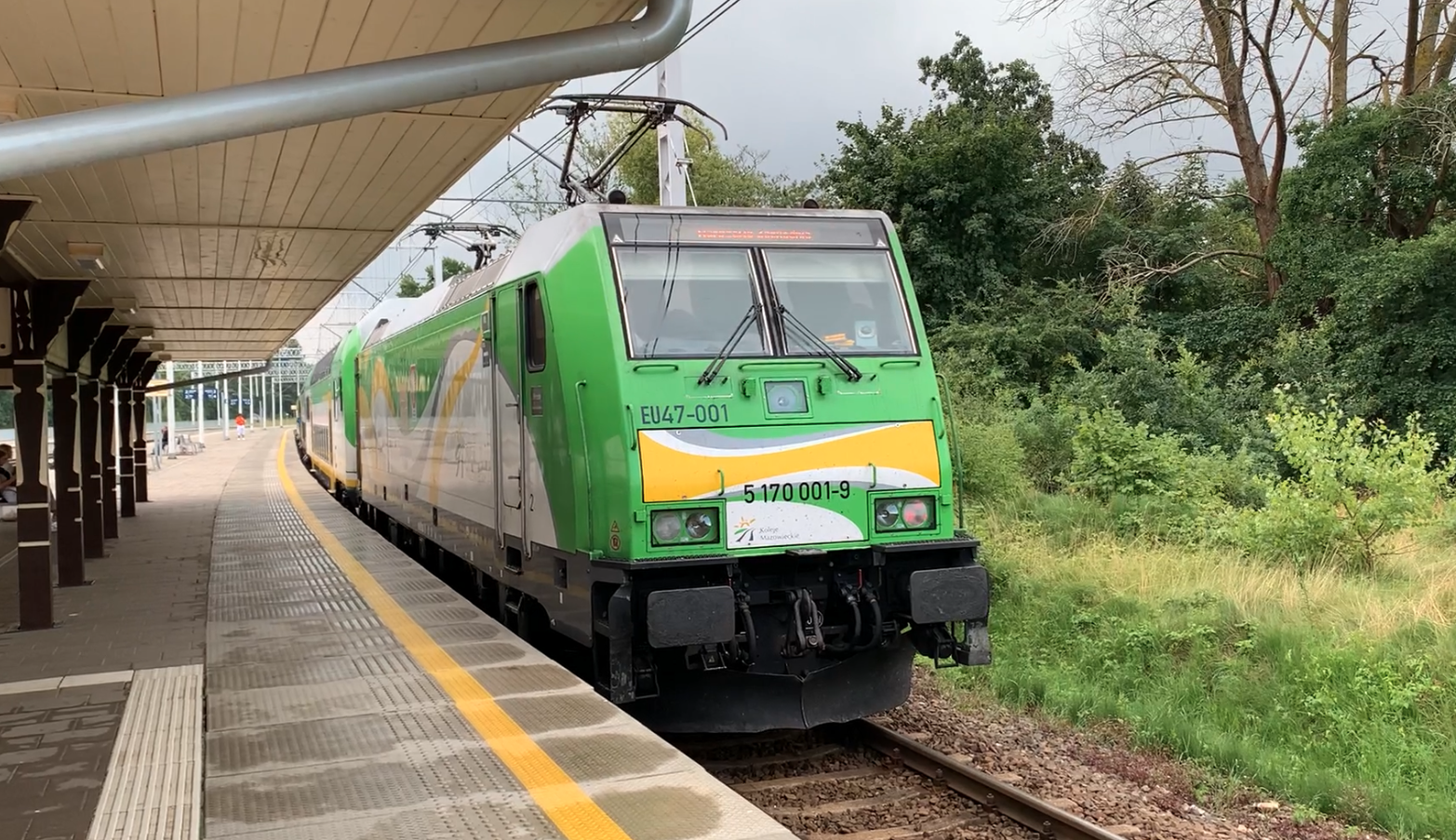
Leave a Reply
You must be logged in to post a comment.